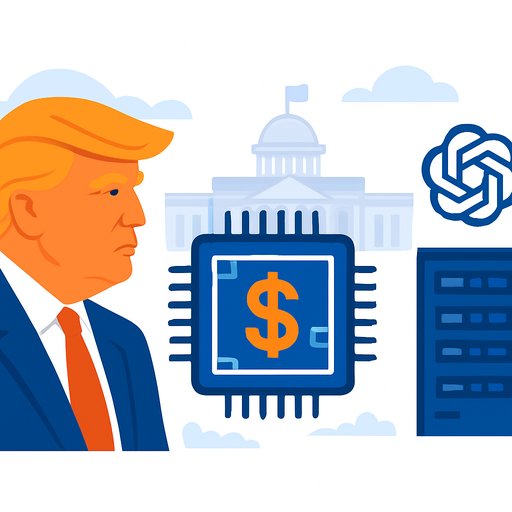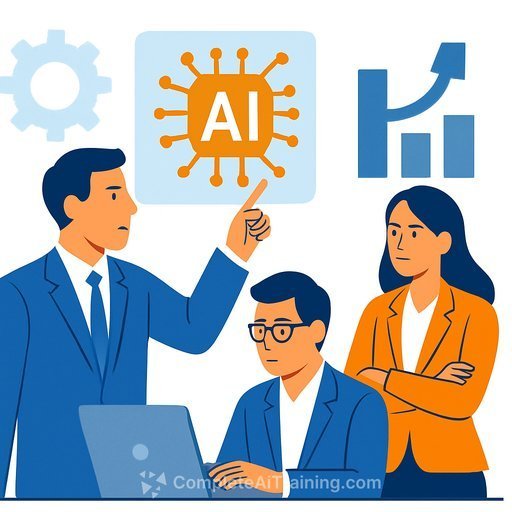OpenAI's Push to Extend CHIPS Act Tax Credits to AI Data Centers
OpenAI has asked the Trump administration to expand the CHIPS Act's Advanced Manufacturing Investment Credit (AMIC) beyond semiconductor fabrication to include AI data centers, servers, and electrical grid components. The goal: lower the cost of building large-scale AI infrastructure in the U.S. and speed deployment at national scale.
The request was delivered by Chris Lehane, OpenAI's chief global affairs officer, in a letter to White House officials. It proposes a broader policy framework that couples tax incentives with permitting reform and supply chain measures.
What OpenAI Is Asking For
The company's proposal seeks to widen AMIC eligibility so data centers and their core inputs qualify alongside chip fabs. That includes high-density AI servers, transformers and switchgear, and grid upgrades needed to power new capacity.
OpenAI argues that expanded coverage would reduce effective cost of capital, de-risk early investment, and catalyze private funding for U.S.-based builds.
Policy Context: Where AMIC Stands Today
The current AMIC provides a 35% tax credit for qualified semiconductor manufacturing investments under the CHIPS Act. Extending that credit to AI infrastructure would mark a notable shift from a fab-first approach to a full-stack industrial policy for AI.
For reference, see Treasury's AMIC overview for statutory scope and guidance updates: Advanced Manufacturing Investment Credit.
The Proposal's Core Components
- Accelerated permitting and environmental review for AI infrastructure projects
- Strategic reserves for critical materials like copper, aluminum, and processed rare earth minerals
- Streamlined regulatory pathways for data center construction and operation
Signals from Leadership
OpenAI's executives emphasized they are not seeking direct guarantees. CFO Sarah Friar stated, "OpenAI is not seeking a government backstop for our infrastructure commitments."
CEO Sam Altman added, "We believe that governments should not pick winners or losers." The stance: set clear, neutral rules and tax treatment, then let the market allocate capital.
Scale Behind the Ask
OpenAI expects to surpass a $20B annualized revenue run rate by the end of 2025, with ambitions scaling to the hundreds of billions by 2030. The company says it has secured $1.4 trillion in capital commitments over the next eight years, pointing to the magnitude of data center capacity, energy, and supply chain needs.
Viewed through that lens, expanded AMIC eligibility would be a financing accelerant, not a lifeline-especially for first-wave builds in constrained markets.
Implications for Energy, Crypto, and Industrial Policy
High-density AI clusters drive major power demand, substation upgrades, and long-lead electrical equipment. Those dynamics spill into wholesale markets and siting decisions that also affect crypto mining and other compute-heavy industries.
For energy context, see federal analysis of data center load growth: U.S. EIA on data center electricity consumption.
Key Considerations for Decision-Makers
- Federal officials: How to define eligible AI infrastructure under AMIC while maintaining technology neutrality and avoiding firm-specific preferences? What guardrails are needed on domestic content, supply chains, and workforce development?
- State and local leaders: Which siting, water, and grid criteria should tie to incentives? Can fast-track permitting be paired with clear reliability and environmental standards to shorten timelines without increasing risk?
- Enterprise executives: How do capital plans change under different credit scenarios? Are utility partnerships, modular site design, and heat reuse strategies factored into TCO and timeline models?
- Investors: What is the expected cadence of Treasury guidance and transferability mechanics for credits tied to non-fab assets?
Process and Timeline
The letter, published October 27, has drawn attention as OpenAI clarified it is not seeking guarantees for data centers. Any movement will likely run through Treasury/IRS guidance and interagency coordination with the White House science and technology leadership.
The proposal was addressed to Michael Kratsios, serving as White House Director of Science and Technology Policy under the Trump administration.
Bottom Line
OpenAI is asking for broader, neutral tax treatment and faster project approvals-without direct federal backstops. If adopted, it would set a precedent for how the U.S. treats AI infrastructure as strategic industrial capacity while keeping market selection intact.
Leaders evaluating AI buildouts can benefit from structured upskilling. Explore role-based training for executive teams: AI courses by job.
Your membership also unlocks:










